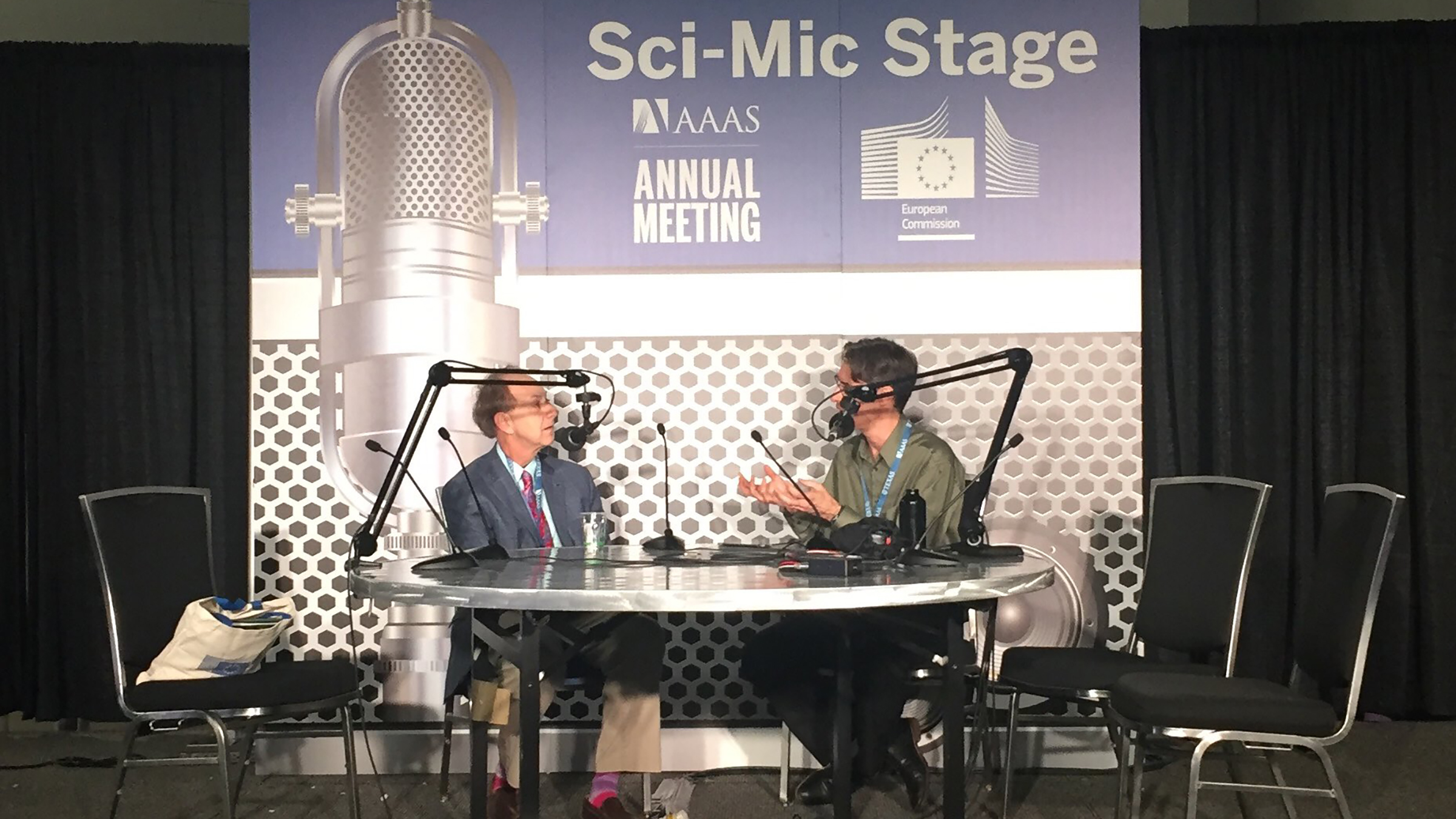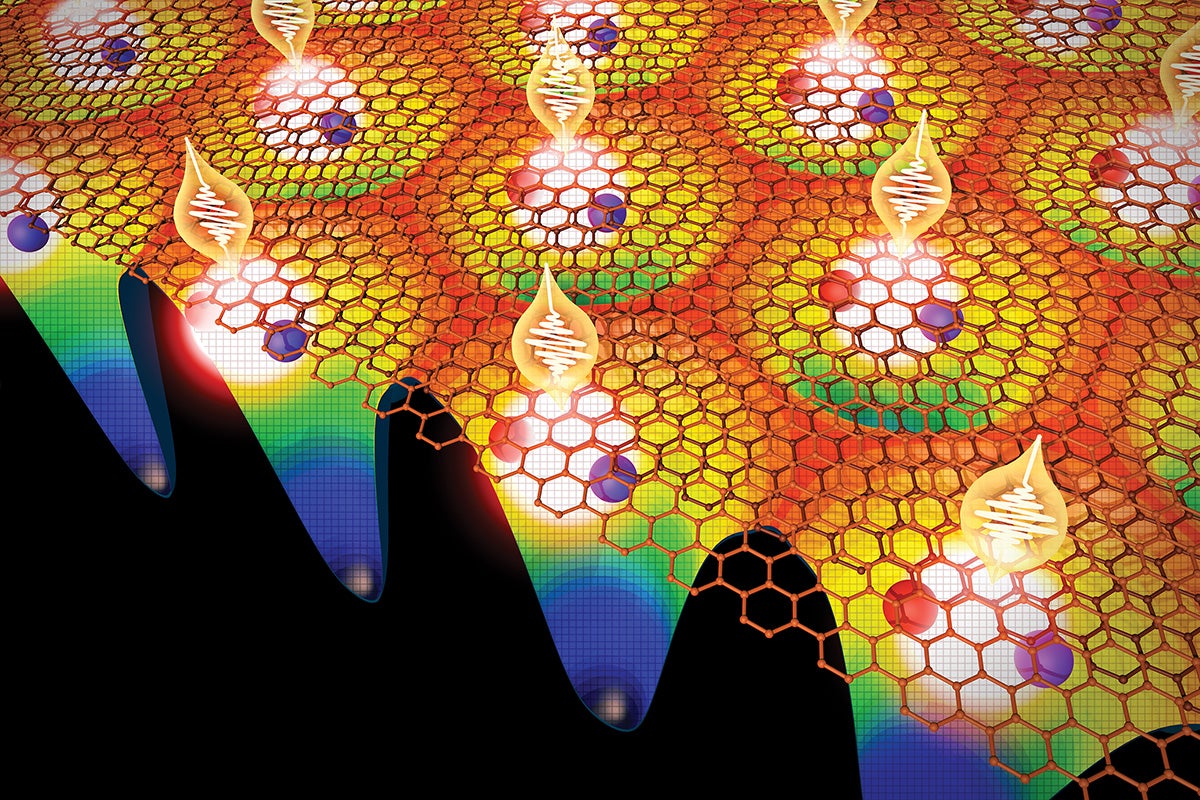A Score to Settle with Cancer
Jonathan Sessler knows the odds of bringing effective new cancer treatments to market are stacked against him, yet he tirelessly pushes ahead.

Jonathan Sessler was a college student when he was first diagnosed with Hodgkin's lymphoma. Fortunately, he was also a chemistry major. After surviving radiation therapy, relapsing and then surviving extremely high doses of what he calls "rat poison" (a.k.a. chemotherapy), his oncologist challenged him: "You're a chemist. Find new cancer drugs."
In the four decades since, he's founded two companies, one of which commercialized a blockbuster drug for leukemia and was sold for $21 billion. The other is working to develop a drug he invented to treat ovarian cancer, based on large molecules that deliver poisons to cancer cells and named after the Lone Star state: Texaphyrin. He knows the odds of bringing effective new cancer treatments to market are stacked against him, yet he tirelessly pushes ahead.
Last month, he spoke to producer Marc Airhart in front of a live audience at the annual meeting of the American Association for the Advancement of Science.
TRANSCRIPT
BH: This is our inaugural try at this and we will be reprising it at subsequent annual meetings coming up – live interviews every half hour for podcast recording.
MA: This is Point of Discovery. I recently had the chance to do something I have never done in public before.
BH: And now without further ado, please welcome Marc Airhart.
MA: I got to tape our podcast in front of a live audience. About 10,000 scientists were in Austin for the annual meeting of the American Association for the Advancement of Science, or the AAAS. And there—on a stage in the middle of the exhibit hall—I had an intimate conversation about an advance that matters a great deal to many people: beating cancer. Former vice president Joe Biden, who leads the Biden Cancer Initiative and launched the nation's "Cancer Moonshot" effort, spoke at the annual meeting—but that's not who I talked to. I invited someone else who, like Biden, has had up-close encounters with cancer: Jonathan Sessler, a chemist at the University of Texas at Austin. I started by asking him how he got started in the work he does, developing cancer drugs.
JS: I became interested in this fight when I was diagnosed with cancer at the age of 19. So I have a personal vendetta against this disease, I am a three-time cancer survivor. And I can tell you Marc, it's a lot more fun being Dr. Sessler, cancer researcher, than Mr. Sessler, cancer patient. But the cancer patient aspect of my life has underscored just how unfun this disease is. And I'm one of the lucky ones. … I'm a cancer researcher because I'm a former, and hopefully never future, cancer patient.
MA: Diagnosed with lymphoma as a college student, Sessler underwent radiation therapy, one of the only types of treatment available at the time. He recovered but relapsed just a few years later. His oncologist recommended what was then a new treatment option: chemotherapy.
JS: … by then some of these rat poison therapies were available, and I went through 9 cycles of chemo when 6 was the standard protocol – and this is thanks to Richard Miller who just kept saying you can take more before you die and kept loading me up – I owe my life to that gentleman.
MA: That must have taken a lot of faith, right, in medicine.
JS: As a 21-year-old or whatever I was at the time. The ultimate optimism is denial. And I just didn't believe that there was any outcome other than a positive one. I'm now much more old and jaded. But at the time, this is just something you do and then you're going to get to go back and play.
MA: How did that experience shape you as a chemist and a researcher?
JS: It made me very grateful for the community we live in – whether it's the funders who pay us, the public who pay taxes so they have the money to fund our research– whether it's the clinicians, the nurses, it made me overall grateful to humanity – and thinking again, problems that need to be solved, versus my particular skill set such as it is. Where do we find the intersection and how can I do something that's worthwhile?
JS: I've been multiply blessed in this life and that's given me both an opportunity and an obligation – so the theme of this AAAS meeting of translating from initial discovery to real benefits for humanity – and that can be increased knowledge, it can be better detection of cancer, it can be better treatment … – and I'm one of, as you said, 10,000 scientists and you scratch every one of them and you will find a dedicated man, woman, young child – who knows – working hard to take their talents for the benefit of us all. And all I can say is thank you to my colleagues.
MA: Sessler's oncologist—a cancer researcher at Stanford Medical School, named Richard Miller—challenged him to put his skills as a chemist to work to fight cancer. Sessler eventually developed a molecule called Texaphyrin, which is easily absorbed by cancer cells, but not healthy cells. The idea was to use Texaphyrin as a vehicle to deliver poison to brain cancer cells. Sessler and Miller formed a company called Pharmacyclics to commercialize the drug, but it failed to win FDA approval.
JS: Texaphyrin had many wonderful attributes. It went into over 1,000 patients and we were two times unlucky. Because of economic reasons, we underpowered the study and two centers out of 64 in France waited a long time to put patients on trial. If either had not happened, we would have had an approved drug. So this was something remarkably good.
MA: They had a plan B, though. They licensed a promising molecule from another company, just before Sessler and Miller parted ways with Pharmacyclics. Sure enough, when tested—first in dogs and then in humans—that drug, Ibrutinib, was effective in treating some blood cancers. It became a big hit for Pharmacyclics.
JS: … which I'm pleased to report is used to treat over 40% of leukemia patients. So that's a real success. So Pharmacyclics goes down in biotech history as one of the largest acquisitions. It was purchased by AbbVie for $21 billion in 2015.
MA: Even though their first drug, Texaphyrin, didn't win FDA approval, Sessler learned something important.
JS: Out of that, we've discovered that this is an incredibly safe compound. Texaphyrin with gadolinium in it was in over 1,000 patients, no grade 3 or 4 toxicities. We found it localized to cancer by mechanisms that are complicated, but are now reasonably well understood, and it allowed MRI so you could take a look at the cancer by standard imaging. These were attributes that were just too good to throw away. We are blessed in Texas to have CPRIT – the Cancer Prevention and Research Institute of Texas -- and they were willing to give us some money to try to redevelop these with a better active species attached and that's the current lead we have.
MA: Sessler's new drug is also based on Texaphyrin—the molecule that acts as a delivery vehicle for poison—but he has swapped out one poison—gadolinium—for another— platinum. He's co-founded a new company, called Cible, to further develop and commercialize this drug, which he hopes will be effective against ovarian cancer. His rationale for forming the company fits perfectly with the theme of this AAAS meeting: "Advancing Science: from Discovery to Application."
JS: Why did we do that? Because fundamental research stays in the laboratory. And that's critical—you don't do research, you don't make discoveries, you've got nothing—but if you only do that, you've lost the opportunity to help humanity. …
JS: There's a huge financial gap between discovery and development. Those in the drug discovery/development business refer to this as the Valley of Death. We, as a small company, are seeking funding to get through that to bring it to first-in-human testing and then if the lord above smiles on us, if we get the funding, and work very hard, then we start to get promising results, we develop momentum. And so the early discovery, that's really limited to our creativity, hard work and some seed money from granting agencies which do that. The transition requires more creative mechanisms, venture capitalists who are willing to take a risk, and it is high risk.
MA: By some estimates, only 1 in 5,000 to 10,000 drug candidates make it from the lab to the marketplace. But as a three-time cancer survivor, Sessler is not easily discouraged.
JS: … the odds are still against us, but the prize in terms of helping people and economic driver is sufficient, I hope, that there will be investor or investors out there who are willing to put the money in and I joke, we talk to lots and lots of people, most say no, but it's like marriage, we only need one yes and we're off to the races to help humanity.
MA: Just to bring us back where we started: Developing cancer drugs is a real moonshot proposition. What makes you hopeful for all the millions of people who suffer from cancer now and in the future?
JS: So I'm really positive about this, first let me answer personally, because I think we've spent quite some time, learned a lot, so I'm no longer quite as naïve and we've really designed what I think is a very good lead compound for Cible. So that makes me personally optimistic we have something that will go after ovarian cancer. We have reasons to believe it will help activate some of these new immuno-oncology drugs, we think it has a play in brain cancer ... More broadly, why am I optimistic? Ibrutinib will take many soft cancers and turn them from acute death sentences to chronic diseases. So here we have a datum point of success. Solid tumors—lung cancer, brain cancer—these are so challenging but now the play's in that area and so the smart money, the smart people and the geniuses that make up the collective community of cancer research is beginning to move into that area. These are hard problems. Mother nature doesn't give up her secrets easily, but we, as humans, we never quit and we're going to do our very best and come back 5, 10 years and mark the progress—you will see in these now impossible areas, suddenly hope is on the horizon. Don't despair. Keep fighting. We're with you.
MA: Fantastic. Thank you for your perspective.
JS: Again, it's been an honor to be here. Thank you very much.
MA: Special thanks to the European Commission for sponsoring the Sci-Mic Stage at the AAAS annual meeting in Austin. And thanks to Bob Hirshon and his team at AAAS for running logistics and sound.
MA: Point of Discovery is a production of the University of Texas at Austin's College of Natural Sciences. We're on the web at pointofdiscovery.org. Our senior editor is Christine Sinatra. I'm your host and producer Marc Airhart. Thanks for listening!


